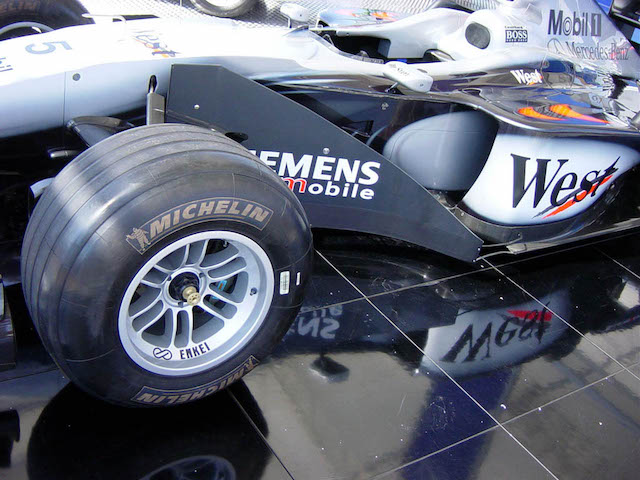Key Differences In Nascar Car Race
Motorsports bring together skill, endurance, and thrilling competition. The most exciting events are the NASCAR car race and the East African Safari Rally. Despite both being famous motorsport events, they differ greatly in many aspects. From race formats to the types of vehicles used, each event offers a unique set of challenges for drivers and teams. The contrasts between these two races highlight their distinct characteristics.
The environment of Nascar car race
The biggest difference between the NASCAR car race and the East African Safari Rally is the environment where they take place. Predominantly, people hold NASCAR races on oval tracks. These smooth, controlled surfaces allow for high-speed racing and demand precision and strategic maneuvering from the drivers. The race tracks specifically provide a consistent and predictable environment.
On the other hand, the East African Safari Rally takes place on varied and unpredictable terrains. The rally takes place across East Africa and spans many different types of roads, including gravel paths, dirt roads, and forest trails. Drivers must navigate through mud, rocks, and other natural obstacles. This unpredictable terrain poses unique challenges for rally drivers, requiring them to adjust their driving style constantly.
Race format and duration
NASCAR car races follow a set format. Races usually take place on closed-loop oval tracks, and drivers race for a set number of laps. NASCAR races are relatively short in duration, typically lasting from one to four hours, depending on the event. The goal is to complete a set number of laps around the track in the shortest time possible. The drivers are often in direct competition with one another for position, and they win or lose the race based on quick decisions and pit stops.
In contrast, the East African Safari Rally spans several days and covers a vast distance. The event comprises of multiple stages, and drivers must endure long stretches of challenging terrain each day. These stages can last for hours, and the rally itself can take up to a week to complete. Rally drivers must navigate through not only physical obstacles but also weather changes, such as heavy rain or dust storms, making the race more unpredictable and taxing on both the driver and the vehicle.
Type of vehicles used
The vehicles used in a NASCAR car race are highly specialized machines built for speed and aerodynamics. NASCAR cars are designed to race on smooth, paved tracks, so their chassis, tires, and suspension systems are optimized for high-speed performance on such surfaces. The vehicles are also equipped with powerful engines that allow for rapid acceleration and consistent high-speed driving.
In contrast, vehicles in the East African Safari rally are designed for endurance and durability. Rally cars must withstand the harsh conditions of off-road racing, such as rough terrains, steep inclines, and constant exposure to dust and dirt. These vehicles are typically reinforced with heavier suspension systems, off-road tires, and modifications to ensure that they can endure the grueling stages of the rally. They must also be built to handle quick repairs during pit stops, as mechanical failures are common in such extreme conditions.
Race strategy
In a NASCAR car race, strategy revolves around maintaining high speeds, positioning for overtakes, and managing pit stops efficiently. Drivers must make split-second decisions to navigate traffic, choose the best line through the turns, and avoid accidents. Pit strategies, including tire changes and fuel management, are also a crucial part of the race. Teams often use real-time data to adjust car settings and race strategies.
The strategy in the East African Safari Rally, however, is quite different. Rally drivers must think about conserving the car’s performance over the long term. They need to balance speed with the durability of the vehicle, as aggressive driving can lead to mechanical failures. Rally drivers must also plan their routes carefully, adjusting their speeds to match road conditions. Unlike in NASCAR, where quick pit stops can change the course of a race, rally teams focus on vehicle maintenance and efficient repairs during designated service areas.
Pit stops and maintenance
In NASCAR, pit stops play a huge part in race strategy. During a pit stop, the car is refueled, tires are replaced, and minor adjustments are made. These stops are fast, often taking just a few seconds, and they can influence the outcome of the race. Teams work quickly and efficiently to get the car back on the track as soon as possible. The pit crew’s ability to perform under pressure can make or break a race.
In rally racing, the concept of pit stops is different. While drivers still have access to service areas for repairs and maintenance, these stops are less frequent and usually longer in duration. Instead of quick tire changes and refueling, rally teams may spend more time repairing damaged parts, adjusting settings for different terrain, and ensuring the vehicle is fit to continue the race. Due to the rough nature of the rally’s terrain, these maintenance stops are often more intensive.
Driving skills and techniques
NASCAR car races demand precision driving at high speeds. Drivers must have an excellent understanding of their car’s aerodynamics and how to manage speed through sharp turns. Driving techniques in NASCAR focus on maintaining momentum, drafting behind other cars to gain speed, and executing strategic passes.
Rally drivers, however, must master a variety of driving techniques suited to off-road conditions. They need to adapt their driving to different terrains, including gravel, sand, and mud. Rally drivers must also handle obstacles like large rocks or water crossings, requiring them to adjust their speed and control their vehicles accordingly. Unlike NASCAR, which primarily involves racing on smooth surfaces, rally racing challenges drivers to maintain control while navigating unpredictable and hazardous environments.
Role of technology in both events
Technology plays a vital part in both NASCAR and rally racing, but it is applied differently in each. In NASCAR, technology focuses on speed optimization, including advancements in aerodynamics, fuel efficiency, and vehicle telemetry. Teams use data analysis tools to monitor the car’s performance during a race, adjusting settings for the best possible performance. The vehicles themselves are equipped with cutting-edge technology designed to enhance speed and reduce friction on the track.
In the East African Safari rally, technology is used to enhance vehicle durability and navigation. GPS systems help drivers stay on course, while advanced suspension systems and rugged tires ensure the car can handle the rough terrain. While some rally cars use similar data analysis tools, the focus is more on ensuring the vehicle can endure long days of racing across challenging environments rather than optimising speed alone.
Fan experience
The fan experience at NASCAR races is very different from that of the East African Safari rally. NASCAR races are typically held at large, dedicated race tracks, with massive crowds of fans attending each event. The atmosphere is filled with excitement, and fans can enjoy the spectacle of high-speed racing, watch pit stops, and cheer on their favorite drivers. The races are often televised, allowing a global audience to follow the event live.
In contrast, the East African Safari Rally is much more intimate in terms of its fan experience. The rally takes place across multiple stages and locations in East Africa, with fans often following the race on foot or in vehicles to different checkpoints. Rally fans experience the event up close, witnessing the vehicles as they pass through rugged landscapes. The sense of adventure and exploration adds a unique element to the fan experience in rally racing.
Global reach and popularity
NASCAR has a massive global following, with its roots firmly planted in the United States. The sport has grown into a global phenomenon, with millions of fans tuning in for each race. Major races like the Daytona 500 attract huge television audiences, and the series itself enjoys significant media coverage. NASCAR’s influence spans continents, and the races are broadcast in multiple countries.
While the East African Safari Rally is a prestigious event, it has a more localized, regional following. The rally is particularly famous in Africa and has gained international recognition among motorsport enthusiasts. Its unique challenges, combined with its rich history, make it an iconic event within the rally racing world. Though it may not enjoy the same level of global recognition as NASCAR, the East African Safari Rally has a dedicated fanbase that appreciates the event’s complexity and difficulty.
Culture of NASCAR and rally racing
NASCAR and the East African Safari rally both have distinct cultures shaped by their environments and histories. NASCAR is deep in American culture and has a long history of stock car racing. The sport is part of the fabric of American motorsports, with its fans showing strong loyalty to drivers and teams. The culture of NASCAR racing revolves around high-speed excitement and thrilling finishes.
Rally racing, especially the East African Safari Rally, carries a different cultural weight. The event has its roots in Africa, and the unique challenges of rally racing through East African landscapes contribute to a culture of resilience, endurance, and adventure. The Safari Rally culture emphasizes the endurance of both vehicles and drivers, creating an environment that celebrates toughness and perseverance in the face of nature’s challenges.
A motorsport contrast
The NASCAR car race and the East African Safari rally stand apart in many ways, but both showcase the pinnacle of motorsport. NASCAR is a high-speed, precision-based race on smooth tracks, while the East African Safari Rally demands endurance, adaptability, and mastery over challenging off-road conditions. Both races push drivers and vehicles to their limits, testing the boundaries of speed, strategy, and teamwork.
While NASCAR is fast and thrilling on controlled oval tracks, rally racing emphasises resilience on ever-changing terrains. Motorsports fans celebrate both events for their unique challenges and the incredible skills required to succeed. Each offers a distinct experience, from the excitement of NASCAR’s track battles to the rugged adventure of the East African Safari rally.
Expose your brand at the East African Safari Classic Rally05 – 13 December 2025
|






